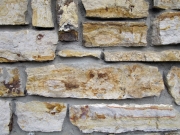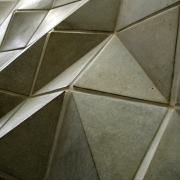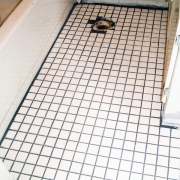Grouting
Grout is a strong cementitious mix or chemically-setting mix used for filling voids, joints, or cracks in concrete or masonry. There are two main categories of grout: cementitious grout and chemical grout. Cementitious grout has been used in the U.S. since the mid-1800's to create grouted reinforced masonry. This construction is normally used on buildings limited to a few stories. Cementitious grout is also used for embedding reinforcing bars, which increases the amount of load-bearing material in a masonry wall; for filling hollow metal door frames; for repairing cracks; and for connecting pre-cast concrete panels. Chemical grouts are fluid and are used for filling under the bearing plates of columns and machine bases or for injection to fill cracks. Grouts used for tiling, flooring, resin grout, flowable fill, stone restoration, and foundation and slab jacking are examples of more specialized grouts.



